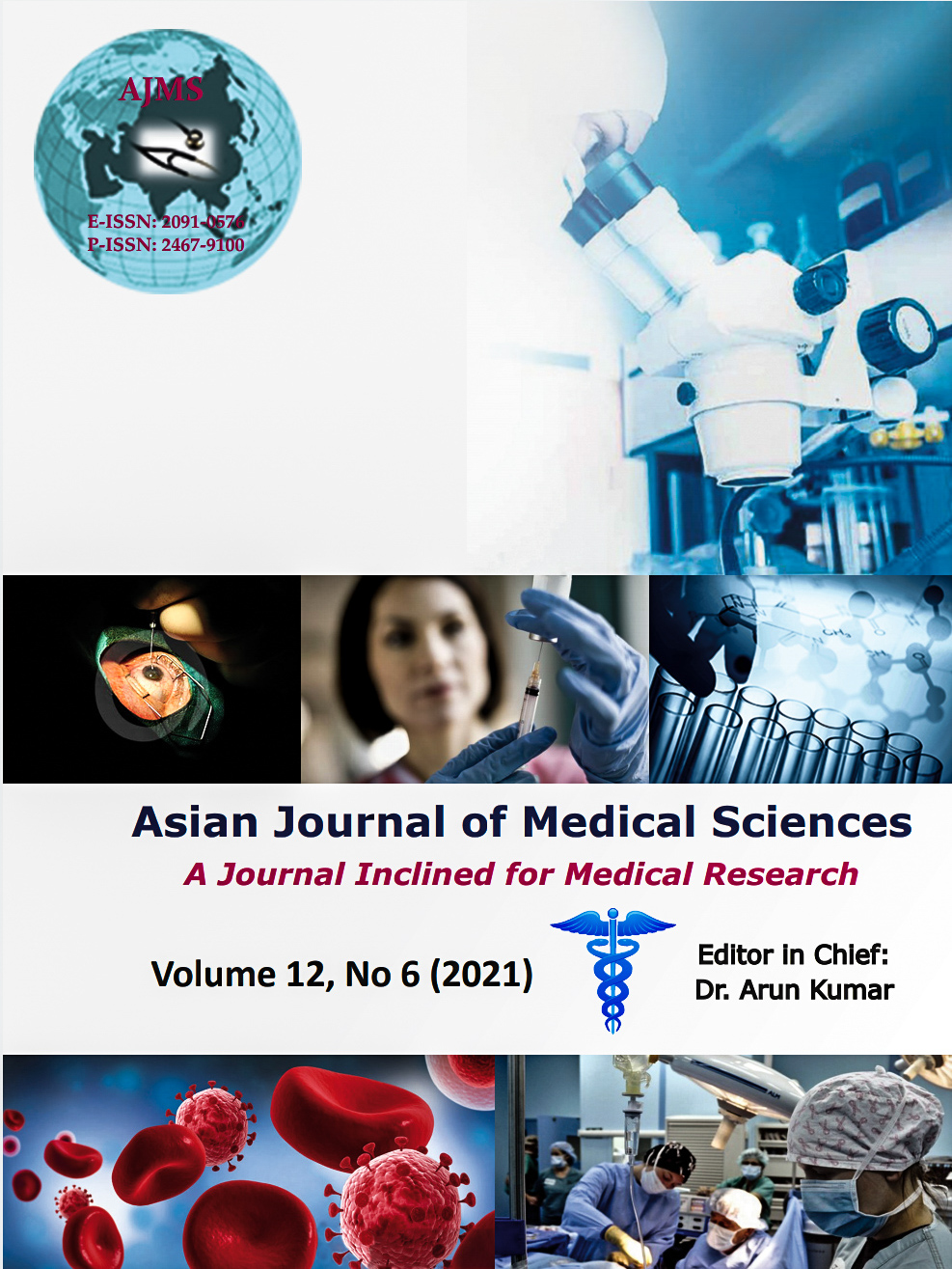Association of Glycosylated hemoglobin with Radiological severity, Systemic inflammation and Hypercoagulability in COVID -19 patients in a hospital from Central India: A Monocentric Retrospective Observational study
Keywords:
HbA1c, COVID-19, hypercoagulability, systemic inflammation, SpO2, D dimer, IL6Abstract
Background: COVID-19 is currently the most common cause of morbidity and mortality worldwide. Diabetes is also one of the most common causes of morbidity and associated complications. Identification of prognostic markers like glycated hemoglobin can help early categorization of patients and their better management.
Aims and Objectives: To determine if Glycated Hemoglobin (HbA1c) levels are associated with radiological severity of COVID -19 disease, thereby predict prognosis in COVID -19 patients. Its association with D dimer and
IL-6 was also evaluated to assess hypercoagulability and systemic inflammation in these patients.
Materials and Methods: A monocentric retrospective observational study was conducted during admission period from August 1, 2020- October 31, 2020. HbA1c levels of 188 patients who tested positive for COVID-19 in a dedicated COVID-19 tertiary care center (L.N. Medical college and J.K. Hospital, Bhopal) were determined. They were divided into 2 groups: A (HbA1c level ≤6.5 %), B (HbA1c level >6.5 %). Severity of disease in terms of lung involvement in HRCT Chest was recorded. Their SpO2 and oxygen requirement at admission was also recorded. Among laboratory investigations, D dimer, IL6 Levels were obtained.
Results: Out of 188 COVID-19 positive patients included in our study, there were 132 men, 56 women. Median age of patients was 66 years. Mean HbA1c level was 7.2%. Of these, 87 had normal HBA1C and 101 had raised HBA1C >6.5%. Oxygen was required in 58 patients with raised HbA1c (RR of 2.782, p value<0.0001), of which 42 patients had severe lung involvement (RR of 2.498, p value=0.0003). 20 (22.9%) patients with normal HbA1c required oxygen on admission, out of which 11 (12.6%) patients had severe lung involvement. Those who had higher HbA1c levels, had higher chances of severe lung involvement (>50%) in radiological evaluation (RR 2.783, p-value 0.0003, Positive Likelihood ratio: 2.78, 95% CI: 1.60 to 4.83, 85% specificity).Significant increase in D dimer was seen in 77 (76.2%) patients with raised HbA1c compared to 40 patients (45.9%) with normal HbA1c(RR-1.6582, p-value 0.0001). No significant relation between HbA1c levels with IL-6 was found.
Conclusion: Patients with raised HBA1C contracting COVID-19 have more severe inflammation and greater lung involvement, higher chances of oxygen requirement and are associated with higher risk of hypercoagulability. HbA1C will not only help identify hyperglycemia but also help assess severity of disease (both clinically and radiologically), systemic inflammation, hypercoagulability, thereby helps in predicting prognosis, managing patients and hasten recovery.
Downloads
Downloads
Published
How to Cite
Issue
Section
License
Authors who publish with this journal agree to the following terms:
- The journal holds copyright and publishes the work under a Creative Commons CC-BY-NC license that permits use, distribution and reprduction in any medium, provided the original work is properly cited and is not used for commercial purposes. The journal should be recognised as the original publisher of this work.
- Authors are able to enter into separate, additional contractual arrangements for the non-exclusive distribution of the journal's published version of the work (e.g., post it to an institutional repository or publish it in a book), with an acknowledgement of its initial publication in this journal.
- Authors are permitted and encouraged to post their work online (e.g., in institutional repositories or on their website) prior to and during the submission process, as it can lead to productive exchanges, as well as earlier and greater citation of published work (See The Effect of Open Access).




